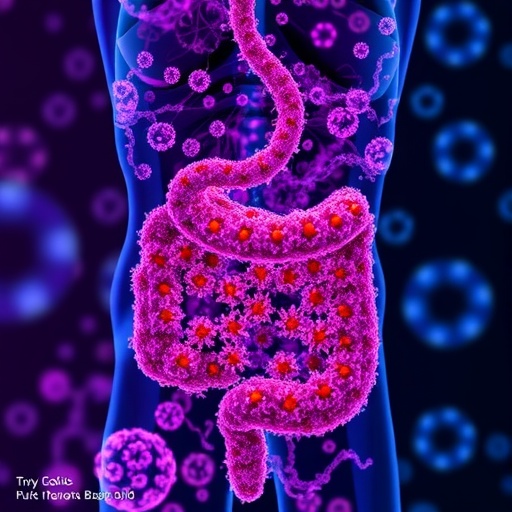
Credit: George Mason University
The World Health Organization and American Academy of Pediatrics recommends exclusive breastfeeding for the first six months of life. However, new research led by George Mason University’s College of Health and Human Services found high rates of mixed breastfeeding and early introduction of formula among their sample of low-income, predominately Hispanic immigrant women participating in the Women, Infants, and Children (WIC) federal food assistance program.
Assistant Professor Dr. Sina Gallo led the study with colleagues from the Loudoun County Health Department and Georgetown University. Published in Public Health Nutrition, they found that 61% of infants in their sample received formula in the first few days of life. More than half of the mothers reported use of formula due to perceived insufficient milk supply. Going back to work was also commonly cited as a reason for introducing formula, and some cultural beliefs may have encouraged the use of a mix of both breast milk and formula.
Mothers who set an exclusive breastfeeding goal were five times more likely to be exclusively breastfeeding at three months post-partum. Those who did not complete high school were four times more likely to be exclusively breastfeeding at three months and six times more likely to be exclusively breastfeeding at six months than those who had completed a high school education or greater.
The researchers suggested that most early breast-feeding problems can be addressed with education about when and how much to breastfeed and culturally appropriate support from clinicians. Gallo explains, “The main reason for introduction of formula was a perceived insufficient milk supply–which is likely a preventable reason–and education on sufficient breastmilk in the first few days as well as improved baby friendly hospital practices such as skin-to-skin and feeding in the first hour can help mitigate this practice.”
This study investigated the feeding patterns of 190 low-income, predominantly Hispanic immigrant women who attended two WIC clinics in Loudoun County, Virginia. 81 percent were living below the federal poverty line, and food insecurity was high.
“The early rates of introduction of formula in the population surveyed is alarming – 17 percent reported giving formula at the first feed and 45 percent before they left the hospital. This is the time when support systems should be in place to help mothers exclusively breastfeed, yet many are choosing formula feeding at this time,” explained Gallo.
The researchers explained that in most cases it is possible for new mothers to adapt to exclusive breastfeeding, with education intervention from WIC counsellors, as well as changes in WIC policies to encourage and support breastfeeding.
“Our study aims to inform policymakers of the best way to help minority mothers earning low incomes to adopt exclusive breastfeeding. WIC already provides an expanded food package for exclusively breastfeeding mothers as well as access to lactation counselors. However an increased focus on intense lactation support in the first weeks, including limiting formula as a part of the WIC package for the first month to special circumstances may further help support mothers to meet breastfeeding recommendations,” Gallo noted.
###
About George Mason University
George Mason University is Virginia’s largest and most diverse public research university. Located near Washington, D.C., Mason enrolls 37,000 students from 130 countries and all 50 states. Mason has grown rapidly over the past half-century and is recognized for its innovation and entrepreneurship, remarkable diversity and commitment to accessibility. For more information, visit https:/
About the College of Health and Human Services
George Mason University’s College of Health and Human Services (CHHS) prepares students to become leaders and shape the public’s health through academic excellence, professional service, and innovative practice and research initiatives. CHHS enrolls 1,917 undergraduate students and 950 graduate students in its nationally-recognized offerings, including: 5 undergraduate degrees, 12 graduate degrees, and 11 certificate programs. CHHS is moving toward the goal of becoming a global college of public health in the near future. For more information, visit https:/
Media Contact
Danielle Hawkins
[email protected]
Original Source
https:/
Related Journal Article
http://dx.




